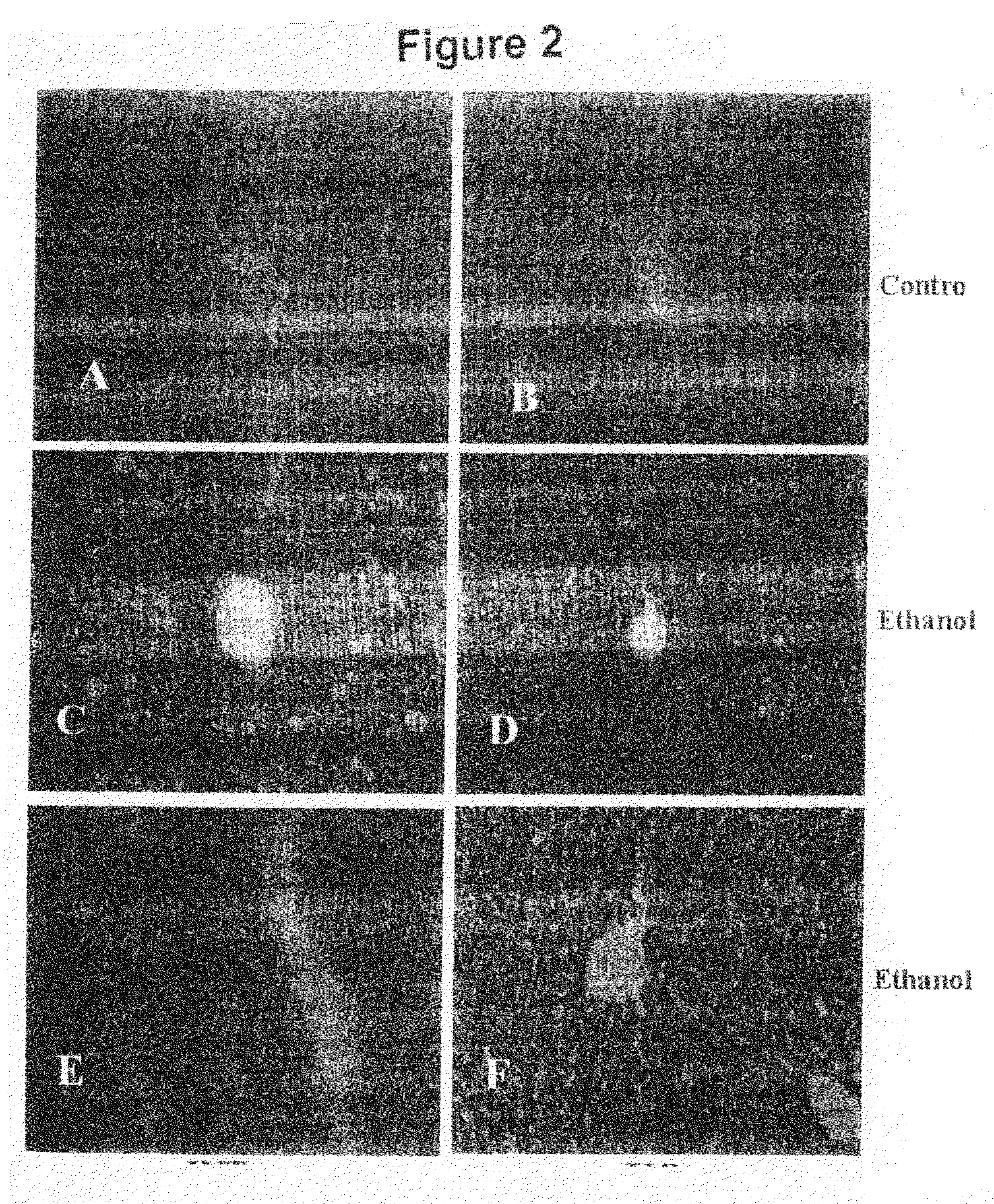Methods and compositions for treating hepatic diseases
a technology for hepatic diseases and compositions, applied in drug compositions, antibody medical ingredients, peptide/protein ingredients, etc., can solve problems such as liver disease, and achieve the effects of reducing, inhibiting or preventing fat deposition in the liver, reducing serum triglycerides, cholesterol or lipids, and reducing serum triglycerides
- Summary
- Abstract
- Description
- Claims
- Application Information
AI Technical Summary
Benefits of technology
Problems solved by technology
Method used
Image
Examples
example 1
Adenosine Receptor A1 Role in Fatty Liver
[0133]Materials and Methods
[0134]Adenosine receptor A1 knockout mice (KO, S129 background) and wild type S129 (WT) mice were bred in the NYU Berg Animal Facility. All experimental mice were 6-8 week old male mice. All experimental procedures were approved by and performed in accordance with the guidelines of the Institutional Animal Care and Use Committee of School of Medicine of New York University. Mice were fed an ethanol-containing liquid Lieber-De-Carli diet (ethanol provide 350 Kcal / L) whereby ethanol was substituted isocalorically for maltose (BioServ Inc., Frenchtown, N.J.) for 6 weeks. In the first week, ethanol animals were gradually introduced to the ethanol diet as per the manufacturers' instructions. Mice were sacrificed by CO2 narcosis at the end of the experimental period (6 weeks) and their livers were collected. Hematoxylin-Eosin (H&E) and Oil Red O staining of liver sections were fixed with 10% neutral formalin, were sliced ...
example 2
Adenosine Receptor A2B Role in Fatty Liver
[0145]Materials and Methods
[0146]Wild-type mice were purchased from the Jackson Laboratory (Maine, USA). Adenosine receptor A2B knockout mice (A2B KO, C57BLU6 background) mice were obtained from Dr. Blackburn's laboratory at the University of Texas at Houston. Animals were bred in the animal facilities of the School of Medicine of the New York University. All experimental mice were 6-8 week old male mice. All experimental procedures were approved by and performed in accordance with the guidelines of the Institutional Animal Care and Use Committee of School of Medicine of New York University.
[0147]Mice were fed an ethanol-containing liquid Lieber-De-Carli diet (ethanol provided 350 Kcal / L) whereby ethanol was substituted isocalorically which maltose (BioServ Inc., Frenchtown, N.J.) for 6 weeks. In the first week, ethanol animals were gradually introduced to the ethanol diet following factory instruction. Mice were sacrificed by CO2 narcosis a...
example 3
Deletion of Ecto-5′Nucleotidase (CD73) Prevents the Development of Ethanol-Induced Fatty Liver in Mice
[0152]Materials and Methods. Eight-week old male mice (wild type and CD73KO mice) were fed a liquid diet containing ethanol (350 Kcal / L) or an equal caloric diet containing maltose for six weeks. Mice were then sacrificed at the end of six weeks, their livers were collected and stained with H&E and Oil-Red O staining. The liver and body of the mice were weighed on the day of sacrifice and the liver / total body weight ratio calculated. The serum AST and triglyceride and hepatic tissue triglyceride levels were also measured.
[0153]Measurements of serum AST and triglyceride. Whole blood was taken from mice at the time of sacrifice and serum was isolated. AST and triglyceride were measured by standard techniques in the Clinical Laboratory of Bellevue Hospital.
[0154]Hepatic triglyceride measurement. Hepatic triglyceride measurements were made as previously described (Hong et al., Hepatolog...
PUM
| Property | Measurement | Unit |
|---|---|---|
| molecular weight | aaaaa | aaaaa |
| molecular weight | aaaaa | aaaaa |
| molecular weight | aaaaa | aaaaa |
Abstract
Description
Claims
Application Information
 Login to View More
Login to View More - R&D
- Intellectual Property
- Life Sciences
- Materials
- Tech Scout
- Unparalleled Data Quality
- Higher Quality Content
- 60% Fewer Hallucinations
Browse by: Latest US Patents, China's latest patents, Technical Efficacy Thesaurus, Application Domain, Technology Topic, Popular Technical Reports.
© 2025 PatSnap. All rights reserved.Legal|Privacy policy|Modern Slavery Act Transparency Statement|Sitemap|About US| Contact US: help@patsnap.com



